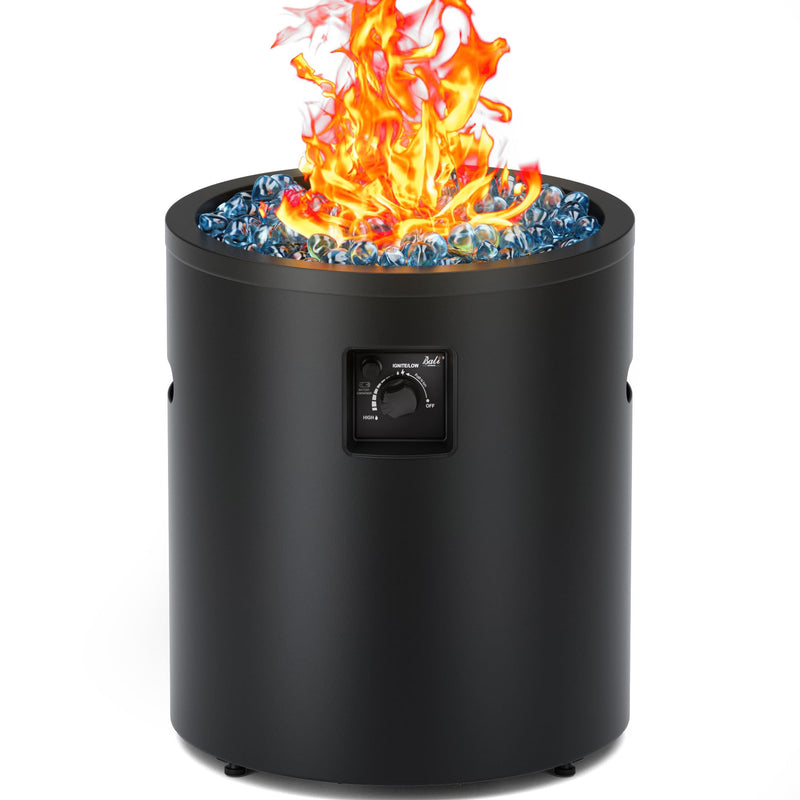Discover the Ultimate Guide to Fire Pits: Ignite Your Outdoor Experience Safely!
As the sun sets and the cool evening breeze begins to whisper, nothing quite compares to the charm and warmth of a fire pit. These stunning outdoor features have gained immense popularity in recent years, transforming backyards into cozy retreats and gathering spaces. Fire pits offer numerous benefits, from enhancing social gatherings with friends and family to providing warmth on chilly nights, and even creating a captivating ambiance that draws people together. However, with this enjoyment comes the responsibility of understanding fire pit safety and the various options available to ensure a delightful experience. In this guide, we will explore the types of fire pits, their uses, and the essential safety measures needed to keep your outdoor space fun and secure.

Understanding Different Types of Fire Pits
When it comes to fire pits, the options are as diverse as the gatherings they host. The three primary types of fire pits—wood-burning, propane, and natural gas—each offer unique characteristics and advantages. Wood-burning fire pits are often celebrated for their traditional charm, creating a crackling ambiance that many find nostalgic. They utilize logs or wood chips as fuel, providing a rich, smoky aroma that enhances the outdoor experience. On the other hand, propane fire pits are known for their convenience and portability, allowing users to enjoy a fire in compact spaces or when traveling. Lastly, natural gas fire pits deliver a consistent fuel supply, eliminating the worry of running out of fuel mid-gathering while also requiring less maintenance. Understanding these differences is crucial in selecting the right fire pit for your needs.
Wood-Burning Fire Pits
Wood-burning fire pits bring a touch of tradition to any outdoor gathering. The warm, flickering flames and crackling sounds create an inviting atmosphere that many cherish. One of the highlights of a wood-burning fire pit is the experience of gathering around a real fire, where stories can be shared, and marshmallows can be roasted over an open flame. However, it’s essential to be aware of the fuel sources, as different types of wood provide varying levels of heat and aroma. Proper maintenance includes regular cleaning of ashes and ensuring that the fire pit is covered when not in use to protect it from the elements.
Propane Fire Pits
For those who prioritize convenience, propane fire pits are an excellent choice. These fire pits are typically portable and easy to operate, allowing for quick setup and takedown. The adjustable flames provide flexibility in heat levels, making them suitable for both intimate gatherings and larger parties. Their compact nature makes them perfect for small backyards or patios. A friend of mine once hosted a barbecue using a propane fire pit, and the ease of lighting it made the evening seamless, allowing everyone to focus on enjoying each other's company without the hassle of traditional firewood.
Natural Gas Fire Pits
Natural gas fire pits are ideal for those seeking a permanent solution. With a direct gas line, these fire pits provide a constant supply of fuel, ensuring that the flames continue to dance long into the night without the need for refueling. Additionally, they require less maintenance than wood-burning options, as there are no ashes to clean up. However, installation considerations are crucial, as proper ventilation and safety measures must be taken into account. Incorporating safety features, such as automatic shut-off valves, can further enhance safety while enjoying the warmth of a natural gas fire pit.
Primary Uses of Fire Pits
Fire pits can serve a multitude of purposes, making them invaluable additions to outdoor living spaces. One of the primary uses is for cooking; many fire pits come with grill grates, allowing you to prepare delicious meals while enjoying the outdoors. Imagine roasting hot dogs or marshmallows over an open flame, or even preparing a gourmet meal in a cast iron skillet. Besides cooking, fire pits provide warmth and comfort during cool evenings, making them perfect for late-night conversations or storytelling sessions. They also create a focal point for entertainment, where friends and family can gather around, share laughs, and create lasting memories. A personal experience that stands out is a camping trip where we sat around a fire pit, sharing ghost stories and roasting s'mores; moments like these truly highlight the joy fire pits can bring.
Essential Safety Measures for Fire Pit Use
While fire pits enhance outdoor gatherings, safety should always be a top priority. Proper placement is key; ensure your fire pit is situated at least 10 feet away from structures, trees, and other flammable materials. Wind can also play a significant role in fire safety, so always check wind conditions before lighting a fire. Supervision is essential, especially when children are present. Keeping a fire extinguisher or a bucket of water nearby can provide peace of mind. Moreover, familiarizing yourself with local regulations regarding outdoor fires can help avoid potential hazards or fines. A friend shared a story of an outdoor gathering where they had to extinguish the fire quickly due to an unexpected gust of wind, reinforcing the importance of safety measures.
Fire Pit Maintenance and Care
To ensure the longevity and safety of your fire pit, regular maintenance is crucial. After each use, allow the fire pit to cool down completely before cleaning out ashes, as they can harbor embers that may reignite. It's also important to cover the fire pit when not in use to protect it from rain, snow, and debris. Seasonal storage is another consideration; if you live in an area with harsh winters, storing your fire pit indoors can prevent damage. Regularly inspecting for rust or wear and tear will ensure that your fire pit remains a safe and enjoyable feature in your outdoor space.
Final Thoughts on Fire Pits
In summary, fire pits are not just a source of warmth and light; they are a gateway to unforgettable outdoor experiences. With a variety of options available—from the nostalgic wood-burning fire pits to the convenient propane and natural gas alternatives—there's a perfect fit for everyone. However, responsible use and adherence to safety measures are paramount to ensure a delightful experience. By understanding the different types of fire pits, their uses, and maintaining safety protocols, you can create a welcoming outdoor environment that enhances gatherings and fosters connection. So, as you consider adding a fire pit to your space, remember to prioritize safety and choose the type that best suits your needs. Ignite your outdoor adventures safely!








